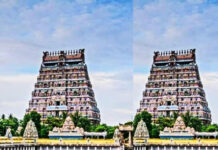
Dear Jeyamohan,
This post about colourism touched my heart!
http://aveenga.blogspot.com/2009/08/blog-post_08.html
What are your thoughts?
Vijayashankar
***
Dear Vijayashankar,
It’s a heartfelt post. I recently had a moment where I deeply reflected on this issue. My daughter Chaidhanya asked me one day, “Dad, I need fifty rupees.”
“For what?” I asked.
“I want to buy a birthday gift for my friend Lavanya.”
Normally, twenty rupees is enough for such things. A group of girls would chip in some money, buy a small gift, wrap it in colourful paper, and attach a name card to it, along with other small rituals.
So, I asked, “Why do you need fifty rupees?”
“Because no one else will give Lavanya a gift, that’s why,” she said.
“Why won’t anyone give her a gift?” I asked, puzzled.
“Because she doesn’t have any friends,” she replied.
“Why doesn’t she have friends?”
“Because she’s dark-skinned, obviously.”
For a moment, I couldn’t comprehend. “So what if she’s dark-skinned?” I asked.
“Oh, come on, Appa! Don’t talk like a fool. Being friends with a dark-skinned girl is embarrassing, right?”
In reality, it was like that. As I dug deeper, I was shocked. In her Christian convent school, there was high regard for fair skin. Out of ten girls, eight were of a striking fair complexion. Two were Muslim, four were Nair girls, some were Christian fishermen’s daughters, and the rest were dark or dusky. But there was a clear preference for the fair-skinned girls.
“Even if a dark-skinned teacher comes, she only talks to them. For school plays and dramas, only they are selected…”
The fair-skinned girls didn’t mix with others. They formed their own circle, and Chaidhanya told me, “Sometimes, if we behave nicely, they let us join them.” The other girls would fight amongst themselves for a place in that group.
Four or five girls had very dark skin. No one paid attention to them. And the sad part? Even the other dark-skinned girls didn’t associate with them. They had to come and go alone.
“The teachers would frequently beat them and scold them, even going so far as to call them ‘black devils’”
I was in shock. “Do they really speak like that?”
“Yes. When one of us ran out of ink, our sister said, ‘Why not just touch your skin and write?’” The sister who said this was a pale-skinned Syrian Christian.
“Are you the only friend Lavanya has?” I asked.
“Yes, I’m a bit dark too, right? That’s why I’m her friend. Every day, she brings me amla fruits.”
I couldn’t help but wonder if Lavanya failed to bring those fruits for just four days, this friendship might be at risk too.
I bought a gift worth a hundred rupees for Lavanya and sent it with my daughter. “Make sure everyone sees you give her this gift,” I said.
“But the other girls will pinch me!”
“Aren’t you the expert pincher in your class?”
“That’s true…” She paused, then asked for my permission to pinch them back fiercely.
What is happening in our schools? It seems we are slowly sending teachers into our schools without any cultural training. In my school class, there was only one fair-skinned boy, Sudhakaran, a Nair. We would tease him relentlessly, calling him “Pale boy.” If he didn’t show us respect, we’d beat him up. In college, fair-skinned Brahmin boys were forced to sit in class shirtless, reduced to tears.
In my days, teachers couldn’t talk recklessly either. If they did, the boys would grab and twist their arms. By the time we were in the tenth grade, eight of our fellow students were already married and had children. It was a different time altogether.
Somewhere along the way, a curious cultural shift occurred. In Sangam literature, a beautiful woman’s complexion was compared to the colour of fresh mango leaves, a dusky, earthy tone. But later, Kannagi was described as having a lotus-like pale hue. Somewhere in this gap, our aesthetic values had completely changed.
Arunmozhi was upset that she wasn’t fair-skinned enough. My sister once recommended a girl for me to marry, but I wasn’t interested in marrying a Malayali girl. To me, the heroines in Thi. Janakiraman’s stories were my ideal. I didn’t even go to see the girl. Later, when Arunmozhi saw her, she exclaimed, “She’s so fair-skinned! Why did you turn her down?”
“Can’t I say no just because she’s fair?” I replied.
“You and your arrogance! You think you’re so superior, don’t you?” Arunmozhi said, clearly upset. To this day, I don’t understand her anger.
My friend Yuvan Chandrasekar’s wife Usha has a dark complexion, and Yuvan is completely smitten with her. He himself is quite pale-skinned. When I told Arunmozhi that Usha is darker than her, she asked, “Darker than me?”
“Yes,” I replied.
That was the only thing that seemed to calm her down a bit.
This is the cultural divide we must bridge in Tamil society.
Jeyamohan
First published on December 2009
Translated by Swetha shanmugam












